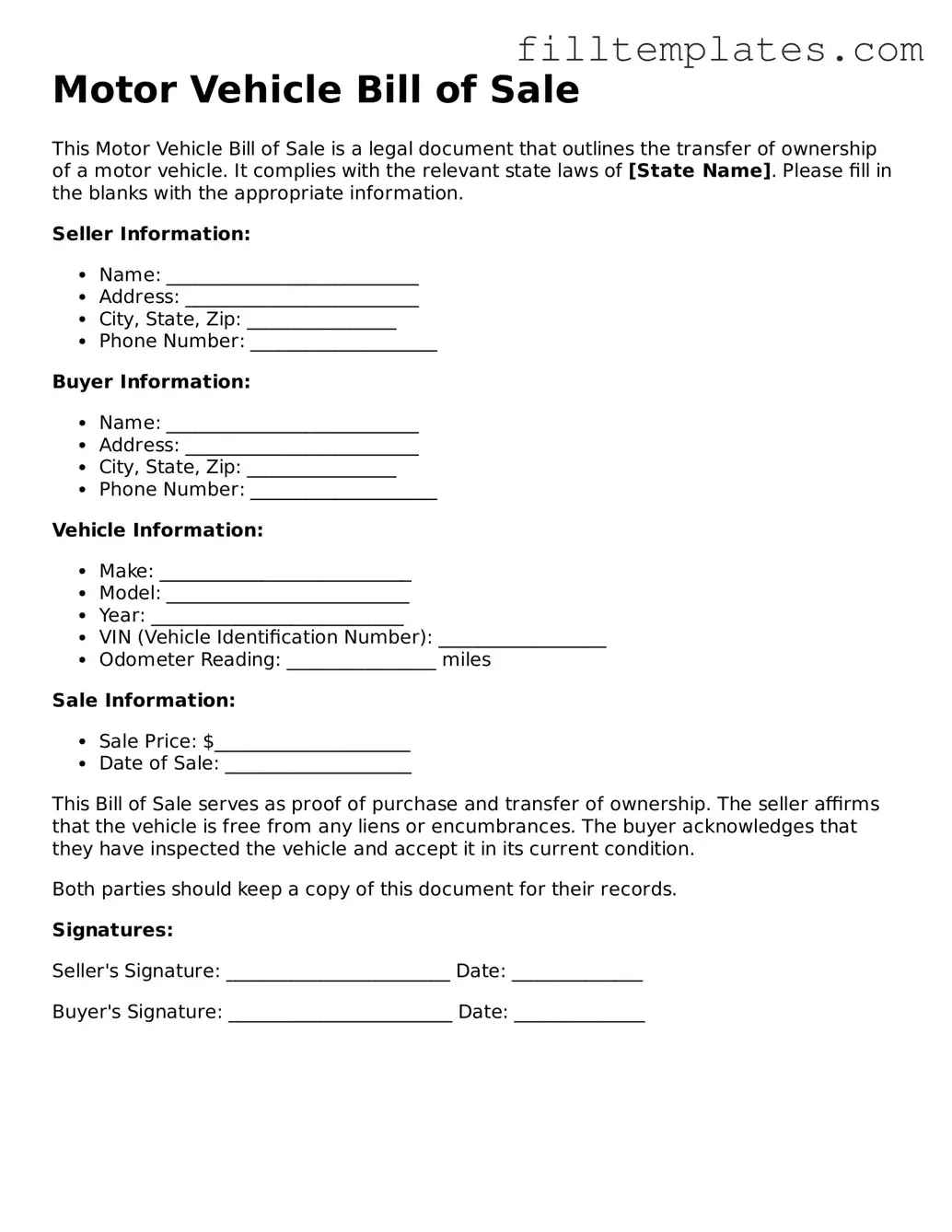Motor Vehicle Bill of Sale
This Motor Vehicle Bill of Sale is a legal document that outlines the transfer of ownership of a motor vehicle. It complies with the relevant state laws of [State Name]. Please fill in the blanks with the appropriate information.
Seller Information:
- Name: ___________________________
- Address: _________________________
- City, State, Zip: ________________
- Phone Number: ____________________
Buyer Information:
- Name: ___________________________
- Address: _________________________
- City, State, Zip: ________________
- Phone Number: ____________________
Vehicle Information:
- Make: ___________________________
- Model: __________________________
- Year: ___________________________
- VIN (Vehicle Identification Number): __________________
- Odometer Reading: ________________ miles
Sale Information:
- Sale Price: $_____________________
- Date of Sale: ____________________
This Bill of Sale serves as proof of purchase and transfer of ownership. The seller affirms that the vehicle is free from any liens or encumbrances. The buyer acknowledges that they have inspected the vehicle and accept it in its current condition.
Both parties should keep a copy of this document for their records.
Signatures:
Seller's Signature: ________________________ Date: ______________
Buyer's Signature: ________________________ Date: ______________
